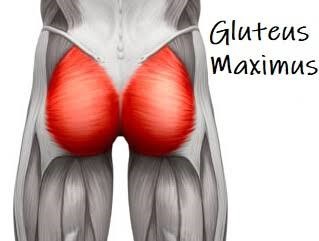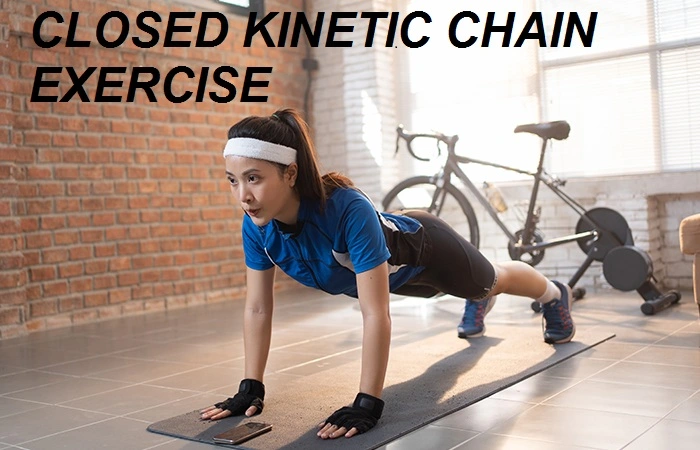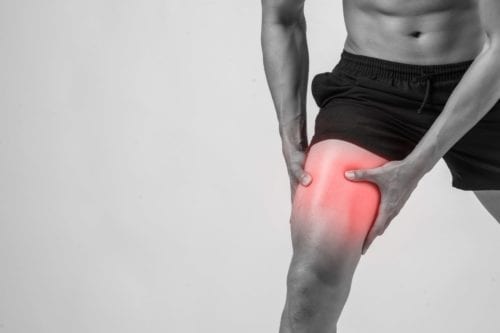Teres minor muscle stretching exercise
Table of Contents
What is Teres minor stretching?
- Teres minor stretch is an important exercise to increase the flexibility of the shoulder region, the exercise increases the overall fitness level as well as decreases the risk of shoulder pain.
- A Teres Minor is a muscle of the rotator cuff which assists to stabilize a humeral head in a glenoid fossa. The muscle also assists in elevation as well as rotation of the arm. A Teres Minor is a long as well as narrow muscle. The Teres Minor does a lateral rotation of an arm, helps with shoulder adduction of an arm, and external rotation of the arm.
- The teres minor stretching is combined with an infraspinatus muscle owing to the teres minor being a very small muscle & situated near a large infraspinatus muscle. If the patient is stretching teres minor then some part of an infraspinatus is also stretched along with it, and vice versa.
What is the importance of teres minor muscle stretch?
There is much importance to stretching teres minor:
- This provides stability to a shoulder joint.
- This increases the range of motion(ROM) of a shoulder joint, so the patient can perform daily activities & athletic work with more ease.
- This increases an external rotation range of a shoulder joint more specifically.
- It increases good blood circulation near a shoulder joint.
- This also supports the scapula to do the movement.
Anatomy of the teres minor muscle
- Description
Teres Minor is the narrow muscle that lies below the infraspinatus, above teres major as well as triceps brachii, & deep to the deltoid. This is one of the four muscles that comprise the Rotator Cuff. - Origin
An upper two-thirds of a lateral border of the scapula. - Insertion
The upper fibers end in the tendon which inserts into an inferior facet of the greater tubercle of a humerus. The lower fibers insert into - a humerus directly below an inferior facet of the greater tubercle of a humerus.
- Nerve Supply
An axillary nerve (roots C5, C6) from a posterior cord of a brachial plexus. - Blood Supply
A circumflex scapular artery as well as the posterior circumflex humeral artery. - Action
Teres Minor, along with Infraspinatus, primarily produces external rotation of a shoulder joint.
It helps in adduction as well as the extension of a shoulder.
When a humerus is stabilized, abducts an inferior angle of a scapula.
What are the types of teres minor stretch?
There are many types the patient needs to know to stretch teres minor:
- Cross body Stretch
- Triceps Stretch
- Shoulder Adductor Stretch
- Doorway stretch
- Passive External Rotation Stretch
- Sleeper Stretch
- External Rotation Stretch
Cross body Stretch
How to perform: First of all, the physical therapist tells the patient to take a standing position with the right arm directly across the chest. After that, the patient’s right hand is past the left shoulder. Next, keep the left elbow tight to the chest as well as lift the forearm so that the right elbow is supported by the left arm.
Use the left forearm to press a right elbow towards the chest.
When the patient feels stretched, hold it for up to 30 seconds in one repetition. Do three repetitions per session. Do three sessions per day. Relax as well as repeat. Now switch to a left arm.
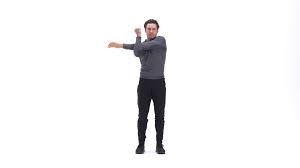
Triceps Stretch
It is triceps stretch, but positioning gives the patient’s teres minor stretch also.
How to perform: Stand tall as well as the upper body should be straight. After that, lift the right arm into the air. Next, bend at the right elbow so that the palm is flat against the spine. Take the left hand as well as place it on the right elbow to give pressure.
With the left hand, gently pull a bent right elbow backward & towards the head to feel the deep stretch.
Hold this position for 30 seconds in one repetition & release. Do three repetitions per session. Do three sessions per day. Repeat & switch to the left arm.

Shoulder Adductor Stretch
The stretching exercise gives teres minor as well as major stretch, along with other adductors of a shoulder joint.
How to perform: To begin with, the physical therapist tells the patient to take a standing position beside the wall.
Place a left palm of an arm nearest to a wall flat against it.
Being to walk the left-hand fingers straight upward a wall as high as you can reach without experiencing pain.
Re-flatten the left hand against a wall as well as lean the body weight against a hand.
The patient can feel the stretch throughout the left arm & down the left side of the body.
Hold it for 30 seconds in one repetition as well as repeat on the right side. Do three repetitions in one session. Do three sessions per day.
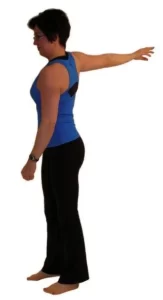
Doorway stretch
How to perform: The patient stands tall with the back facing the closed door. Now move the arm to the back & bend the left elbow to grab a door handle. Next, take the step forward as well as lean forward.
The patient feels a stretch behind the shoulder around the outside of the left scapula.
Hold it for 30 seconds in one repetitio and repeat on another side. Do three repetitions per session. Do three sessions per day.
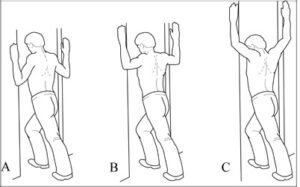
Passive External Rotation Stretch
How to perform: To perform the stretch, the patient needs a stick.
Grab one end of a stick with one hand & the other end by another hand.
Now keep the left elbow by the body throughout the stretching. Then, push a stick to the right side horizontally.
The patient may feel a pull on the left back of the shoulder.
Hold the stretch for half a minute and relax it for half a minute in one repetition. Do three repetitions per session. Perform three sessions per day. Repeat on the right side.
Sleeper Stretch
How to perform: The physical therapist tells the patient that he should lie on the right side on a firm as well as a flat surface.
The right shoulder is under you as well as the arm is bent. After that, place the left hand on the right hand.
With the left arm, push the right arm downward.
The patient feels stretched in the back of the right shoulder.
Hold it for 30 seconds as well as release it for 30 seconds in one repetition. Do three repetitions per session. Do three sessions per day.
Do it on the left side as well.

External Rotation Stretch
How to perform: The patient needs an elastic band for doing this stretching. Make a 2 to 2.5-foot long loop with an elastic band.
After that, tie up the ends together, and join the loop to the firm as well as the stable object.
Now ties a loop around an elbow. Next, maintain the elbow in the bending position & close by the side.
Then, rotate the arm out.
If the patient feels stretched then maintain it for 30 seconds in one repetition and repeat.
Now back to starting position and perform 2 sets on each side of three repetitions.
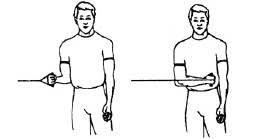
Safety and precaution
There are some safety guidelines, that make sure the patient knows while stretching:
- Do not hold your breath while stretching. Holding a breath may cause tension in the muscles. Keep deep breathing as well as relax while stretching.
- Never force the stretch, if the patient feels mild discomfort. Give stretch only to the point of tension & hold it there. Never feel any intense or even sharp pain. If the patient feels it, stop immediately.
- Be consistent. Stretching for seconds each day will gradually improve flexibility as well as range of motion. It is best than stretching only one time weekly for a longer time.
- Wear comfortable clothing while stretching. If the clothes are very tight, this is difficult to stretch as well as also restrict movement.
FAQ
What causes tight teres minor?
The syndrome may be caused by overuse of an arm, particularly in overhead activity, or even traumatic injury, such as shoulder dislocation. A teres minor is innervated by an axillary nerve as well as supplied, in part, by a posterior humeral circumflex artery
Why does my teres minor muscle hurt?
Injuries may also be the result of overuse (repetitive overhead reaching, pushing, or even lifting with outstretched arms) or weakness of a muscle over a long period of time. Tendinitis, which is inflammation of a tendon, is a common pathology that results from the overuse of a muscle.
How long does it take for teres minor to heal?
Usually, mild rotator cuff tears or even sprains will heal within four weeks. In other severe cases, recovery might take 4 to 6 months or longer based on several factors namely the severity of a tear, age, as well as other health complications.
What causes teres minor trigger points?
Trigger points in a teres minor rarely happen alone & are activated by the strain of an infraspinatus muscle. These trigger points produce complaints of localized pain deep under a deltoid muscle in the belly of the teres minor.
How does the patient stretch the teres minor muscle?
Position arm on the ground with bent elbow positioned forward on the mat as well as hand above elbow. With another hand, grasp the back of the wrist. Keeping an elbow bend at a right angle, push the forearm downward toward the ground. Hold stretch.

